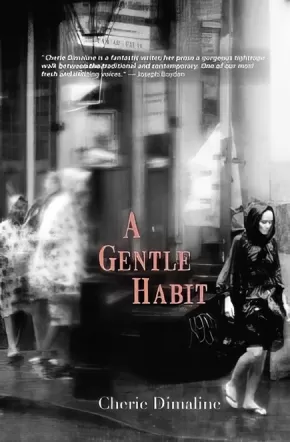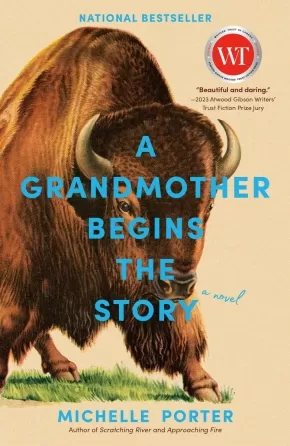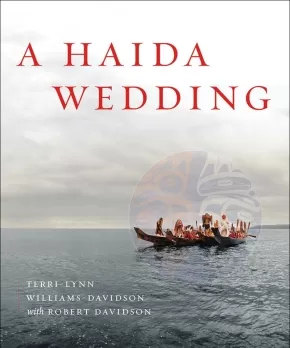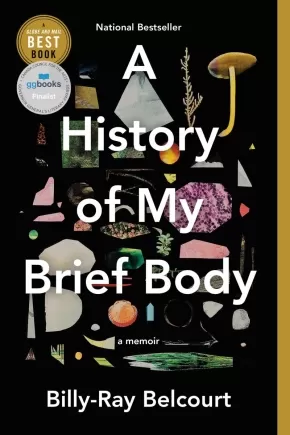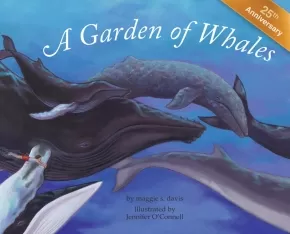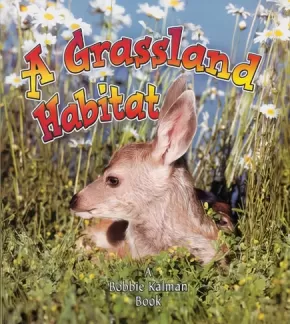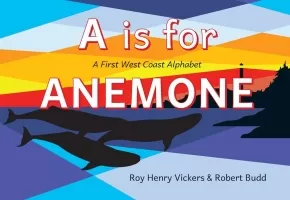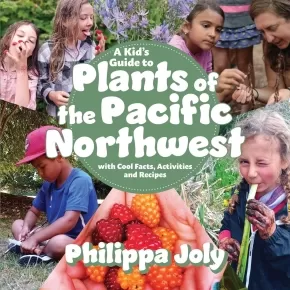
English
Books (6)
A Generous Spirit: Selected Works by Beth Brant
$22.95
Editors:
Format:
Paperback
Text Content Territories:
Indigenous Canadian; First Nations; Haudenosaunee (Iroquois); Kanyen'keha:ka (Mohawk); Tyendinaga;
Grade Levels: University/College;
ISBN / Barcode: 9781771336857
Synopsis:
Synopsis:
A Generous Spirit: Selected Work by Beth Brant collects the writing of Beth Brant, Mohawk lesbian poet, essayist, and activist. During her life, Brant's work gave voice to an often unacknowledged Two-Spirit identity, and today, her words represent continued strength, growth, and connection in the face of deep suffering. A Generous Spirit is Brant's portrait of survival and empathy at the intersection of Native American and lesbian experience.
Edited by noted Native poet and scholar Janice Gould, A Generous Spirit recounts and enacts the continuance of her people and her sisters with distinct, organic voices and Brant's characteristic warmth. Her work is a simultaneous cry of grief and celebration of human compassion and connection in its shared experience. Through storytelling, her characters wrest their own voices from years of silence and find communion with other souls.
Additional Information
200 pages | 5.37" x 8.50"
A Gentle Habit
$24.00
Format:
Paperback
Text Content Territories:
Indigenous Canadian;
Grade Levels: 12; University/College;
ISBN / Barcode: 9781928120025
Synopsis:
Synopsis:
A short story collection by Cherie Dimaline.
The inspiration for the collection comes from American Poet Charles Bukowski who wrote "In between the punctuating agonies, life is such a gentle habit." Following this theme of extraordinary ordinariness, A Gentle Habit is a collection of six new short stories focusing on the addictions of a diverse group of characters attempting normalcy in an unnatural world.
Reviews
"Cherie Dimaline is a fantastic writer, her prose a gorgeous tightrope walk between the traditional and contemporary. One of our most fresh and exciting voices." - Joseph Boyden, author of award-winning novel The Orenda.
“Cherie Dimaline has strongly established herself as a gifted, essential voice in the vibrant realm of global Indigenous literature. The compelling journeys she creates for her richly complex characters invoke the profound storytelling of her Anishinaabe heritage. With A Gentle Habit, Dimaline delivers yet another beautiful set of influential stories that take modern Indigenous writing on a bold, exciting path forward.” – Waubgeshig Rice, CBC Journalist and author of Midnight Sweatlodge and Legacy.
Additional Information
250 pages | 6.00" x 9.00"
A Grandmother Begins the Story: A Novel (PB)
$22.95
Format:
Paperback
Text Content Territories:
Indigenous Canadian; Métis;
Reading Level: N/A
ISBN / Barcode: 9780735245396
Synopsis:
Synopsis:
Five generations of Métis women argue, dance, struggle, laugh, love, and tell the stories that will sing their family, and perhaps the land itself, into healing in this brilliantly original debut novel.
Carter is a young mother, recently separated. She is curious, angry, and on a quest to find out what the heritage she only learned of in her teens truly means.
Allie is trying to make up for the lost years with her first born, and to protect Carter from the hurt she herself suffered from her own mother.
Lucie wants the granddaughter she's never met to help her join her ancestors in the Afterlife.
Geneviève is determined to conquer her demons before the fire inside burns her up, with the help of the sister she lost but has never been without.
And Mamé, in the Afterlife, knows that all their stories began with her; she must find a way to loose herself from the last threads that keep her tethered to the living, just as they must find their own paths forward.
This extraordinary novel, told by a chorus of vividly realized, funny, wise, confused, struggling characters—including descendants of the bison that once freely roamed the land—heralds the arrival of a stunning new voice in literary fiction.
Additional Information
336 pages | 5.18" x 8.00" | Paperback
A Haida Wedding
$29.95
Format:
Hardcover
Reading Level: N/A
ISBN / Barcode: 9781772034516
Synopsis:
Synopsis:
A visual and cultural celebration of a traditional Haida wedding ceremony, exploring its roots, rituals, symbolism, joyfulness, and contemporary significance for a thriving Indigenous Nation.
In 1996, Terri-Lynn Williams and Robert Davidson celebrated their wedding with a traditional ceremony, the first in over a century that was legalized under Haida law. This book provides an intimate photographic window into that momentous day and marks the resurgence of a tradition that was nearly lost to colonial forces.
Relying on recorded knowledge their ancestors had shared with ethnographers and anthropologists, and the few details living Elders could recall about the tradition of guud ‘iina Gihl (“becoming married”) in the time before the arrival of Christian missionaries, the couple carefully planned out a seven-part celebration. It involved a canoe procession, ceremony, feast, dancing, and dowry payment, signifying the coming together of two people, two families, and two clans. The occasion is lovingly and painstakingly recounted through imagery and text in this fascinating tribute to a resilient culture and the unbreakable bonds of love and family.
Additional Information
128 pages | 8.75" x 10.50"| Hardcover
A History of My Brief Body (PB)
$19.95
Format:
Paperback
Text Content Territories:
Indigenous Canadian; First Nations; Cree (Nehiyawak); Woodland Cree; Woods Cree; Driftpile First Nation;
Grade Levels: University/College;
ISBN / Barcode: 9780735237803
Synopsis:
Synopsis:
A slim but electrifying debut memoir about the preciousness and precariousness of queer Indigenous life.
Opening with a tender letter to his kokum and memories of his early life on the Driftpile First Nation, Billy-Ray Belcourt delivers a searing account of Indigenous life that’s part love letter, part rallying cry.
With the lyricism and emotional power of his award-winning poetry, Belcourt cracks apart his history and shares it with us one fragment at a time. He shines a light on Canada’s legacy of colonial violence and the joy that flourishes in spite of it. He revisits sexual encounters, ruminates on first loves and first loves lost, and navigates the racial politics of gay hookup apps. Among the hard truths he distills, the outline of a brighter future takes shape.
Bringing in influences from James Baldwin to Ocean Vuong, this book is a testament to the power of language—to devastate us, to console us, to help us grieve, to help us survive. Destined to be dog-eared, underlined, treasured, and studied for years to come, A History of My Brief Body is a stunning achievement from one of this generation’s finest young minds.
Awards
- Winner of the Hubert Evans Non-Fiction Prize
Reviews
“Bursting with all the movements of sex, riot, and repose, this book presents us with a shock of recognition and reclamation, and we are better for it―punch drunk and aching but, oh, so much better. I’m gutted by his brilliant mind.” ―Cherie Dimaline
“Displays a pervading lucidity, akin to dreaming while standing wide awake, feet firmly on the soil . . . [A] fascinating exploration of the impact of colonialism in all its ramifications.” —Quill & Quire
Additional Information
192 pages | 5.01" x 7.50" | Paperback
A Journey of Love and Hope: The Inspirational Words of a Mi'kmaw Elder
$24.95
Artists:
Format:
Hardcover
Text Content Territories:
Indigenous Canadian; First Nations; Mi'kmaq;
Reading Level: N/A
ISBN / Barcode: 9781774711187
Synopsis:
Synopsis:
The long-awaited collection of talks, presentations, prayers, and ceremonies of renowned Mi'kmaw Elder, human rights activist, and language and culture warrior, Sister Dorothy Moore.
Mi'kmaw Elder Sister Dorothy Moore has spent a lifetime advocating for the rights of her people. As a well-known educator and a survivor of the Shubenacadie Indian Residential School, she has broken down systemic barriers, leading the Mi'kmaq to access all levels of education, and worked tirelessly to reclaim and promote Indigenous ways of knowing and being.
In A Journey of Love and Hope, Sister Dorothy's words are collected in print, as she originally spoke them, for the first time. Included are speeches, talks, presentations, and ceremonies delivered between 1985 and 2015 to universities, government departments, and Indigenous organizations and gatherings. Thematic sections include Culture and Language, Spirituality, Racism, Education, and Prayers and Ceremonies, framed by Ikantek (introductions) from well-known Mi'kmaw writers and educators, as well as an Associate Sister of the Sisters of St Martha.
Sister Dorothy's talks and presentations will inspire and serve to disrupt the dominant narratives of complex Indigenous issues such as colonialism, oppression, racism, and discrimination. A Journey of Love and Hope gives a voice to Mi'kmaw lived experiences and provides a valuable resource for use in schools, postsecondary education institutions, and communities. Her words are an inspiration to all Treaty people.
Features original illustrations by celebrated Mi'kmaw artist Gerald Gloade and appendices, including a complete list of Sister Moore's talks and presentations and a timeline of life events.
Additional Information
184 pages | 6.00" x 9.00" | Hardcover | Colour photo insert
Teen Books (1)
A Girl Called Echo Omnibus
$38.00
Artists:
Format:
Paperback
Text Content Territories:
Indigenous Canadian; Métis;
ISBN / Barcode: 9781774920886
Synopsis:
Synopsis:
Métis teenager Echo Desjardins is struggling to adjust to a new school and a new home. When an ordinary history class turns extraordinary, Echo is pulled into a time-travelling adventure. Follow Echo as she experiences pivotal events from Métis history and imagines what the future might hold. This omnibus edition includes all four volumes in the A Girl Called Echo series:
In Pemmican Wars, Echo finds herself transported to the prairies of 1814. She witnesses a bison hunt, visits a Métis camp, and travels the fur-trade routes. Experience the perilous era of the Pemmican Wars and the events that lead to the Battle of Seven Oaks.
In Red River Resistance, we join Echo on the banks of the Red River in the summer of 1869. Canadian surveyors have arrived and Métis families, who have lived there for generations, are losing their land. As the Resistance takes hold, Echo fears for the future of her people in Red River.
In Northwest Resistance, Echo travels to 1885. The bison are gone and settlers from the East are arriving in droves. The Métis face starvation and uncertainty as both their survival and traditional way of life are threatened. The Canadian government has ignored their petitions, but hope rises with the return of Louis Riel.
In Road Allowance Era, Echo returns to 1885. Louis Riel is standing trial, and the government has not fulfilled its promise of land for the Métis. Burnt out of their home in Ste. Madeleine, Echo’s people make their way to Rooster Town, a shanty community on the southwest edges of Winnipeg. In this final instalment, Echo is reminded of the strength and perseverance of the Métis.
This special omnibus edition of Katherena Vermette’s best-selling series features an all-new foreword by Chantal Fiola (Returning to Ceremony: Spirituality in Manitoba Métis Communities), a historical timeline, and an essay about Métis being and belonging by Brenda Macdougall (Contours of a People: Métis Family, Mobility, and History).
Educator & Series Information
Recommended for ages 12 to 18.
This omnibus edition includes all four volumes in the A Girl Called Echo series:
- Pemmican Wars
- Red River Resistance
- Northwest Resistance
- Road Allowance Era
This special omnibus edition also includes an all-new foreword by Chantal Fiola, a historical timeline, and an essay about Métis being and belonging by Brenda Macdougall
Additional Information
224 pages | 6.50" x 10.00" | Full colour throughout | Paperback
Kids Books (8)
A Garden of Whales (8 in Stock) - ON SALE!
$7.95
Format:
Paperback
ISBN / Barcode: 9780944475355
Synopsis:
Synopsis:
Last night in my tub,
in my tub while I scrubbed,
I dreamed that I lived
in the sea with the Whales.
Magnificent Whales. Mysterious Whales.
Mystical, Musical, Mountainous Whales.
The narrator of this tale is a boy who knows that whales are magnificent but endangered creatures. He wants to do anything he can to save them, and as he scrubs in his bathtub, he dreams up a plan to save the whales.
Children from all over the world also get in their bathtubs to save the whales, planting a garden of whales. He knows this is a fantasy, but the dreams of children are the roots of action.
Additional Information
32 pages | 11.00" x 8.00"
A Grassland Habitat
$10.95
Format:
Paperback
ISBN / Barcode: 9780778729877
Synopsis:
Synopsis:
An amazing multitude of living things thrive in grasslands, such as prairies. In A Grassland Habitat, children will learn about the many kinds of plants and animals that make their homes in prairies. This intriguing book looks at the ways plants and animals are perfectly suited to prairie grasslands. Topics include:
- prairie weather and how animals survive during droughts
- an investigation of prairie animals that build complex underground homes
- how animals stay safe in prairies, where there are few places to hide
Educator & Series Information
A habitat is a natural area in which plants and animals live. Bobbie Kalman’s exciting series Introducing Habitats presents a variety of habitats in a simple way that very young readers will understand. From the exotic to the local, children will be delighted to learn about these habitats! Each book uses beautiful pictures, precise illustrations, and simple, straightforward text to teach young readers about basic concepts such as
- which plants and animals live in each habitat
- the weather in each habitat
- photosynthesis and adaptations
Reading Level: Gr. 1-2 Interest Level: Gr. K-3
Additional Information
32 pages | 8.50" x 9.50"
A is for Anemone (BB)
$14.95
Format:
Board Book
Text Content Territories:
Indigenous Canadian;
Grade Levels: Preschool;
ISBN / Barcode: 9781550179477
Synopsis:
Synopsis:
With crisp, luminous illustrations by celebrated Indigenous artist Roy Henry Vickers, and a simple rythmic text, this sturdy board book introduces the alphabet using iconic imagery of the West Coast, creating a book that will be cherished by young readers and their families.
Starting with colourful sea anemones waving in the ocean current, and closing with a snoozing grizzly bear (Zzz), this board book supports both early literacy and children's awareness of the natural world.
Publishers Weekly described Vicker’s previous collaboration with Robert Budd as “a gorgeous glimpse of the distinctive landscapes and creatures of the Northwest, [that] will enchant residents and nonlocals alike.”
Educator & Series Information
This book is a part of the First West Coast Books series.
Recommended for ages 3 and under.
Key Topics / Concepts: ABCs, Alphabet, West Coast, Indigenous, Canadian, Earth Sciences, Water, Literacy Development, Early Learners, Indigenous Artwork.
Additional Information
28 pages | 7.25" x 5.00" | Boardbook
A Is for Bee: An Alphabet Book in Translation
$26.99
Artists:
Format:
Hardcover
ISBN / Barcode: 9781646141272
Synopsis:
Synopsis:
What letter does the word bee start with?
If you said "B" you're right – in English!
But in many, many languages, it actually starts with A.
Bee is Anū in Igbo,
Aamoo in Ojibwe,
Abelha in Portugese.
And Ari in Turkish.
Come and explore the gorgeous variations in the ways we talk about familiar things, unified and illuminated through Ellen Heck's eye-catching, graphic scratchboard details and hidden letterforms.
Educator Information
Recommended for ages 3 to 9.
Includes some Indigenous words.
Additional Information
40 pages | 7.75 x 10.5 | Hardcover
A Journey to the Mother of the Sea
$16.95
Artists:
Format:
Hardcover
Text Content Territories:
Indigenous Canadian; Inuit; Indigenous European; Greenlandic Inuit;
ISBN / Barcode: 9781772272512
Synopsis:
Synopsis:
The sea animals have disappeared, and people are starving. An old couple, once great shamans, are asked to journey to the Mother of the Sea to find out what happened to the animals. But the journey is dangerous and the old woman does not know if she will be able to please the Mother of the Sea and convince her to free the animals the people of her community so desperately need.
The Mother of the Sea is an important character in Inuit traditional stories shared across the circumpolar region. Known by many names across various regions of the Arctic, the Mother of the Sea is a powerful woman who can withhold the animals humans need to survive if she is displeased by human behaviour. Only a shaman is able to appease the Mother of the Sea and convince her to release the animals that the hunters so desperately need. This tale shares the specific traditional story of the Mother of the Sea told and retold in Greenland for generations.
Educator Information
Recommended for ages 9 to 12.
Additional Information
32 pages | 10.00" x 8.50"
A Kid's Guide to Plants of the Great Lakes Region: Including Southern Ontario with Cool Facts, Activities and Recipes
$26.95
Format:
Paperback
Text Content Territories:
Indigenous Canadian;
ISBN / Barcode: 9781998526109
Synopsis:
Synopsis:
A middle-grade-friendly introduction to flora of the Great Lakes Region, with outdoor activities, games and quizzes that make learning about nature fun! Great for families and educators.
Get dirty digging up roots. Crouch down to look closely at a carnivorous sundew dissolving a dragonfly. Make an elderberry concoction. Test your plant ID skills with a winter twig quiz. Make a soothing plantain salve to treat an itch. Learn which berries you can eat and which to avoid.
Time spent outdoors encourages children’s self-confidence and independence, increases attention span and physical well-being, and fosters care for the environment. With the increasing intrusion of technology into daily life, and the challenges of climate chaos, it has never been more essential for parents and educators to encourage kids to engage with the natural environment. Plants are everywhere, even in urban areas where parks, empty lots and backyards offer the opportunity to learn from and connect to nature.
Drawing on their years of experience as outdoor educators, co-authors Philippa Joly and Danielle Gehl Hagel feature fifty richly illustrated plant profiles, including information on identification and ecology, cultural uses, and fun activities—all in a way that is accessible and interesting to readers of all ages.
Educator Information
Juvenile Nonfiction.
Additional Information
224 pages | 8.50" x 8.50" | Paperback
A Kid's Guide to Plants of the Pacific Northwest: with Cool Facts, Activities and Recipes
$26.95
Format:
Paperback
Text Content Territories:
Indigenous American; Alaska Native; Native American; Indigenous Canadian; First Nations;
ISBN / Barcode: 9781990776212
Synopsis:
Synopsis:
A middle-grade-friendly introduction to Pacific Northwest flora, with outdoor activities, games and quizzes that make learning about nature fun! Great for families and educators.
Get dirty digging up roots. Crouch down to look closely at a carnivorous sundew dissolving a dragonfly. Munch some lemony-tasting miner’s lettuce. Go on a scavenger hunt for some of nature’s more surprising creations, like the arbutus tree, a sculpture of living copper. Make a soothing plantain salve to treat an itch. Learn which berries you can eat and which to avoid.
Time spent outdoors encourages children’s self-confidence and independence, increases attention span and physical well-being, and fosters care for the environment. With the increasing intrusion of technology into daily life, and the challenges of climate chaos, it has never been more essential for parents and educators to encourage kids to engage with the natural environment. Plants are everywhere, even in urban areas where parks, empty lots and backyards offer the opportunity to learn from and connect to nature.
Drawing on her years of experience as a herbalist and outdoor educator, author Philippa Joly features more than fifty richly illustrated plant profiles, including information on identification and ecology, uses in Coastal Indigenous cultures, and fun activities—all in a way that is accessible and interesting to readers of all ages.
Reviews
“This is an absolutely delightful book, dedicated to helping children and youth build relationships with the plants in their world. It is a rich compendium of plant portraits and descriptions, personal stories, recipes, games and hands-on activities—like making tea from Yerba Buena or making a root-digging stick of Oceanspray. Philippa’s obvious love of kids, plants and the natural world shines through—and it is catching!” — Nancy Turner, Professor Emeritus, University of Victoria, and author of Plants of Haida Gwaii
Educator Information
Recommended for ages 6 to 12.
Table of Contents
1. Indigenous Peoples of the Pacific Northwest Coast
2. Regions and Plants Covered by This Book
3. Plant Names and Language
4. Dos and Dont's of Wildcrafting Plants
5. Understanding Plant Families
6. Plant Guilds
7. Poisonous Plants
8. Invasive Plants
9. Plant Profiles
10. For Parents and Educators
Additional Information
232 pages | 8.50" x 8.50" | Paperback
A Kids Book About Racism
$26.99
Format:
Hardcover
ISBN / Barcode: 9780744085679
Synopsis:
Synopsis:
A clear explanation of what racism is and how to recognize it when you see it.
As tough as it is to imagine, this book really does explore racism. But it does so in a way that’s accessible to kids. Inside, you’ll find a clear description of what racism is, how it makes people feel when they experience it, and how to spot it when it happens.
Covering themes of racism, sadness, bravery, and hate. This book is designed to help get the conversation going. Racism is one conversation that’s never too early to start, and this book was written to be an introduction on the topic for kids aged 5-9.
A Kids Book About Racism features:
- A friendly, approachable, and kid-appropriate tone throughout.
- Expressive font design; allowing kids to have the space to reflect and the freedom to imagine themselves in the words on the pages.
- An author who has lived experience on the topic of racism.
Tackling important discourse together!
Educator Information
Recommended for ages 5 to 9.
Additional Information
64 pages | 8.00" x 10.38" | Hardcover



